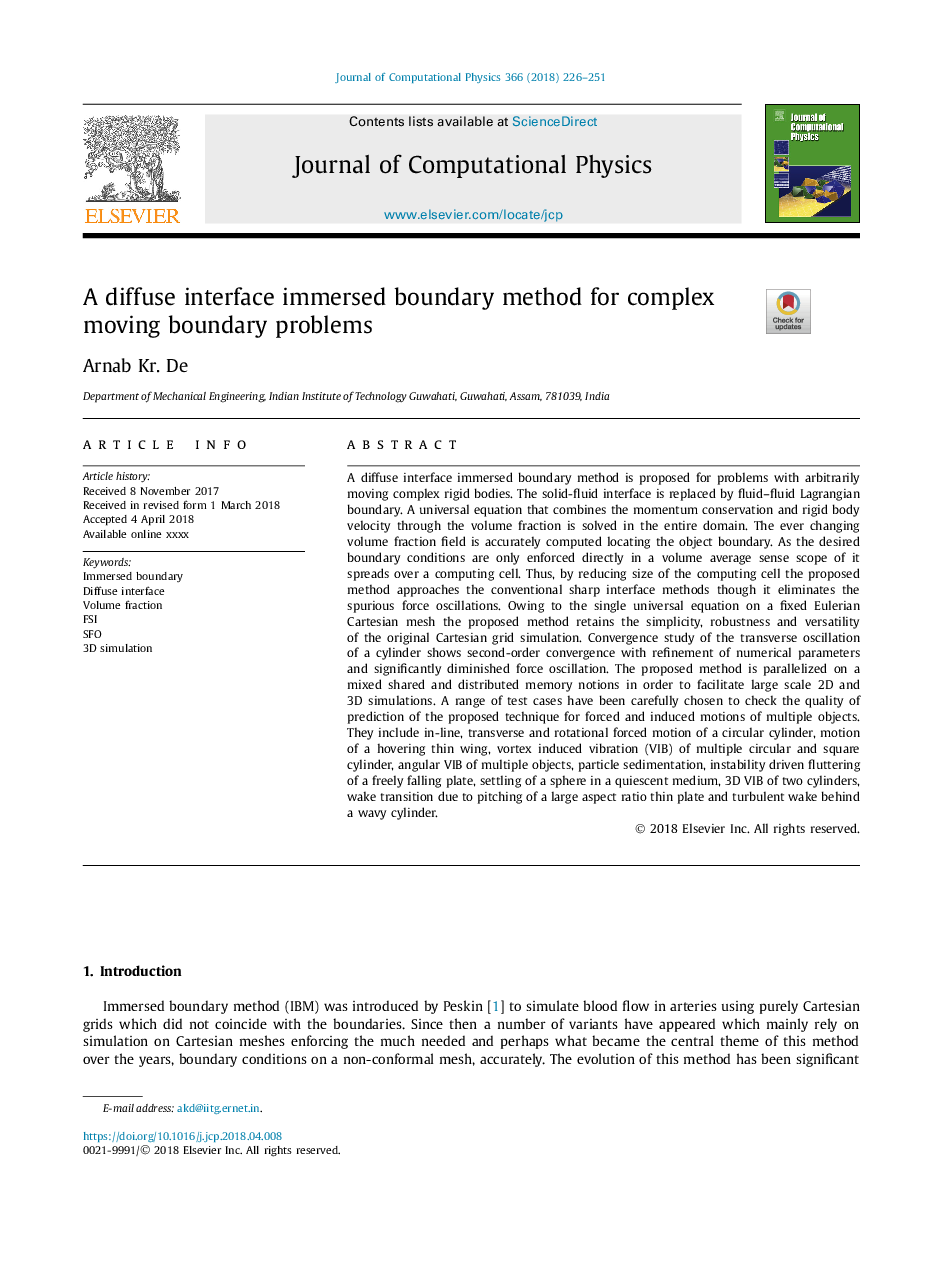| Article ID | Journal | Published Year | Pages | File Type |
|---|---|---|---|---|
| 6928828 | Journal of Computational Physics | 2018 | 26 Pages |
Abstract
A diffuse interface immersed boundary method is proposed for problems with arbitrarily moving complex rigid bodies. The solid-fluid interface is replaced by fluid-fluid Lagrangian boundary. A universal equation that combines the momentum conservation and rigid body velocity through the volume fraction is solved in the entire domain. The ever changing volume fraction field is accurately computed locating the object boundary. As the desired boundary conditions are only enforced directly in a volume average sense scope of it spreads over a computing cell. Thus, by reducing size of the computing cell the proposed method approaches the conventional sharp interface methods though it eliminates the spurious force oscillations. Owing to the single universal equation on a fixed Eulerian Cartesian mesh the proposed method retains the simplicity, robustness and versatility of the original Cartesian grid simulation. Convergence study of the transverse oscillation of a cylinder shows second-order convergence with refinement of numerical parameters and significantly diminished force oscillation. The proposed method is parallelized on a mixed shared and distributed memory notions in order to facilitate large scale 2D and 3D simulations. A range of test cases have been carefully chosen to check the quality of prediction of the proposed technique for forced and induced motions of multiple objects. They include in-line, transverse and rotational forced motion of a circular cylinder, motion of a hovering thin wing, vortex induced vibration (VIB) of multiple circular and square cylinder, angular VIB of multiple objects, particle sedimentation, instability driven fluttering of a freely falling plate, settling of a sphere in a quiescent medium, 3D VIB of two cylinders, wake transition due to pitching of a large aspect ratio thin plate and turbulent wake behind a wavy cylinder.
Related Topics
Physical Sciences and Engineering
Computer Science
Computer Science Applications
Authors
Arnab Kr. De,
